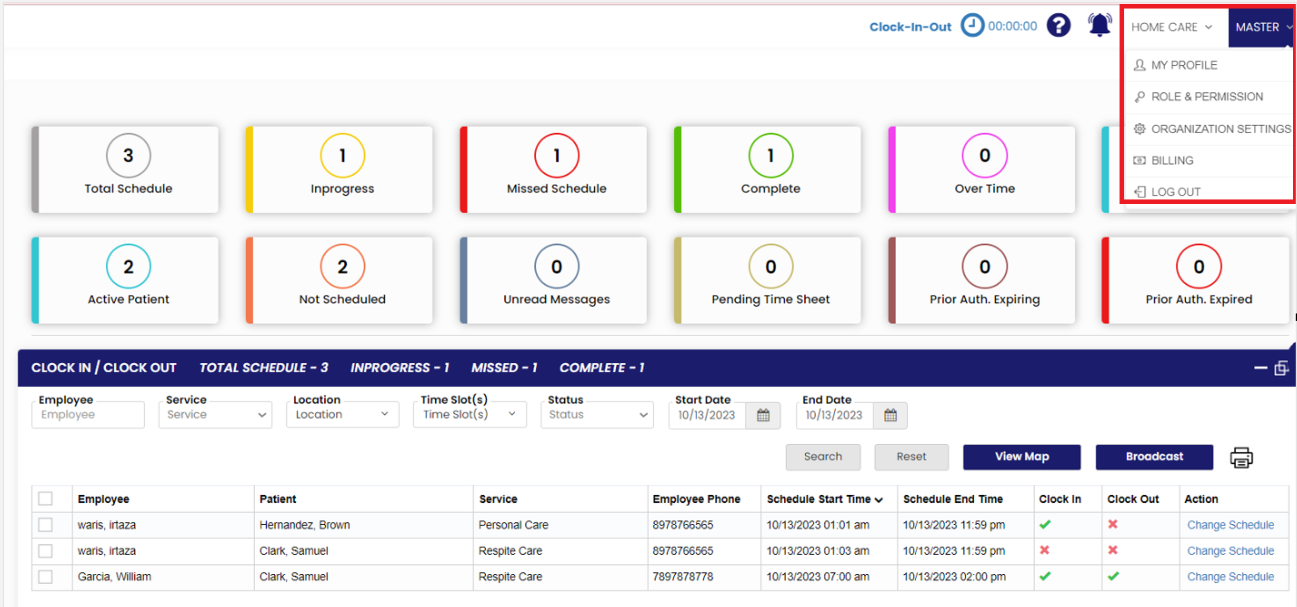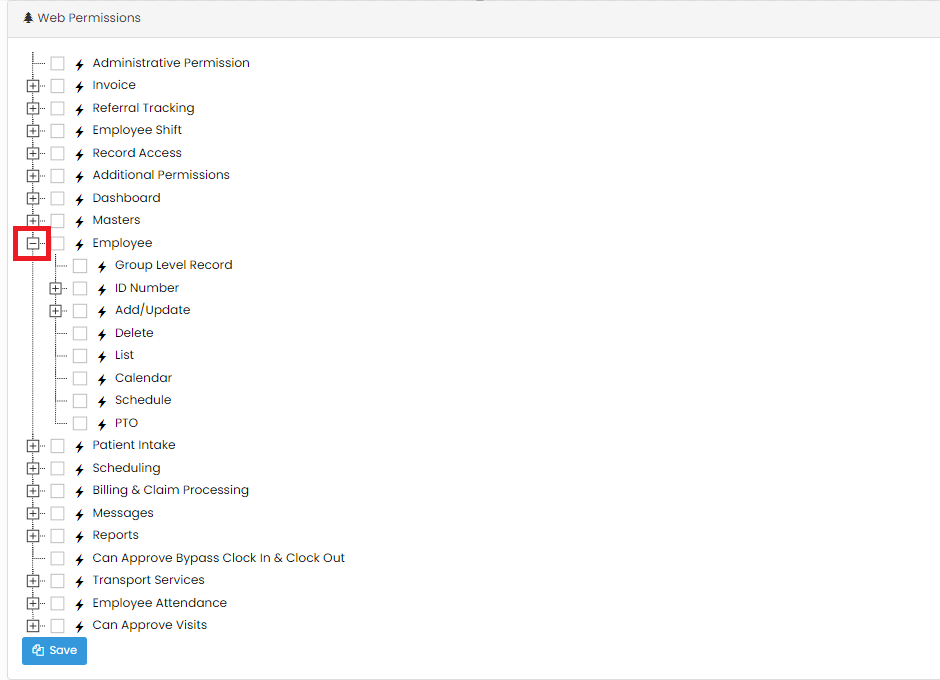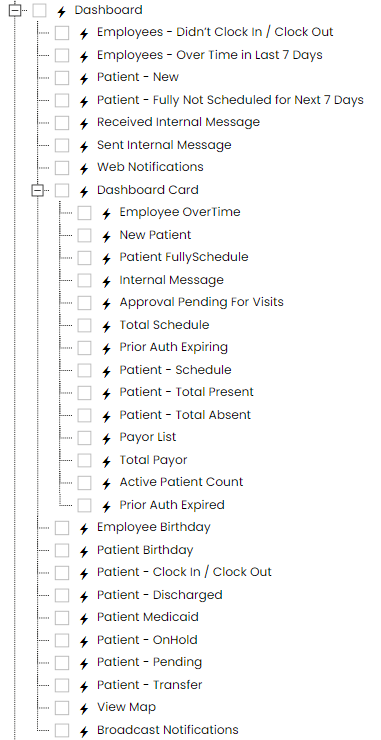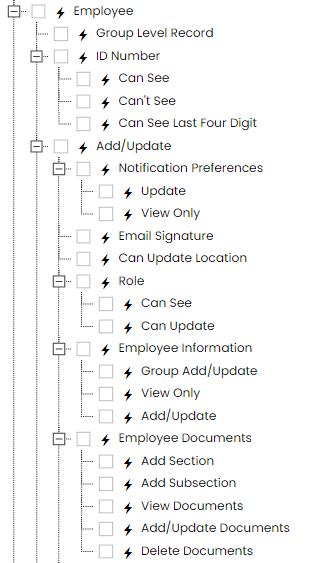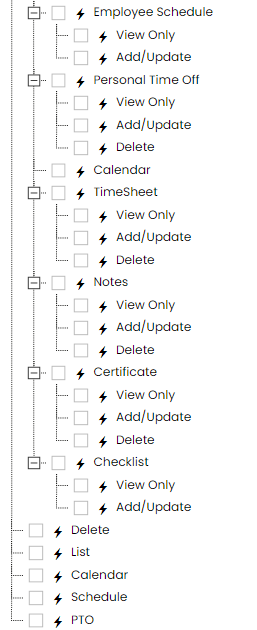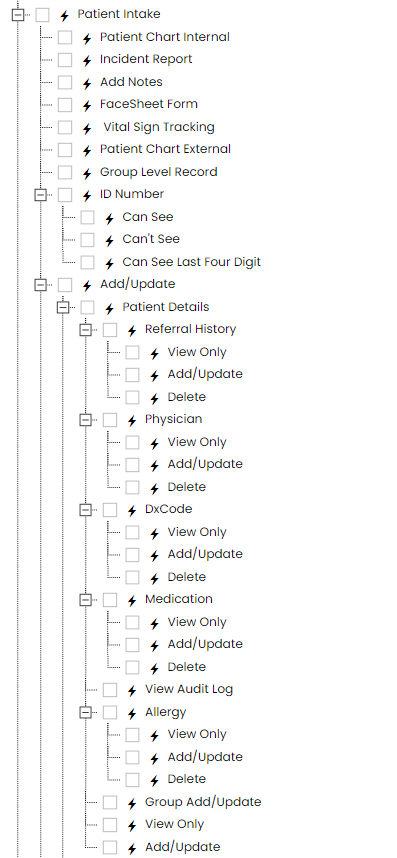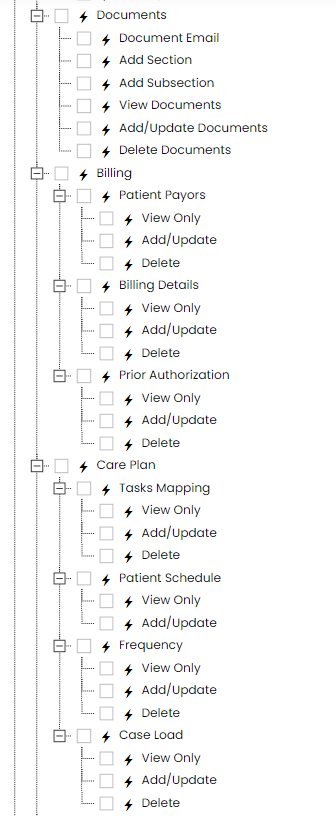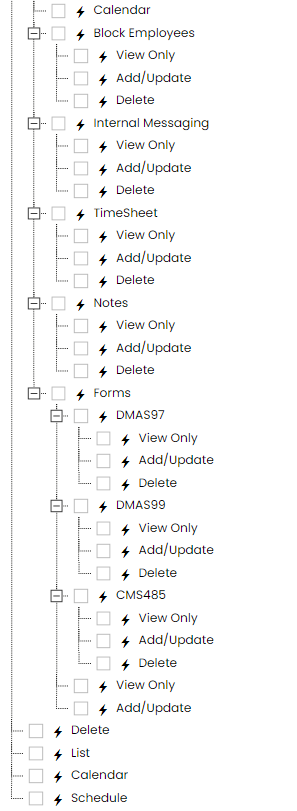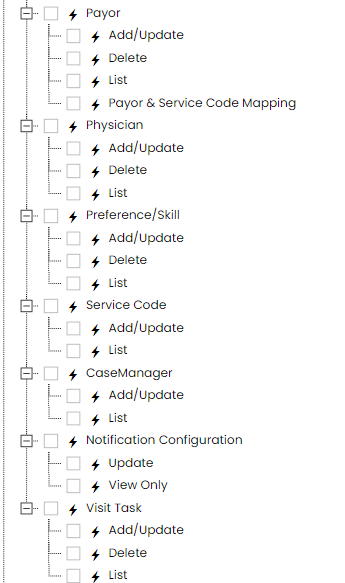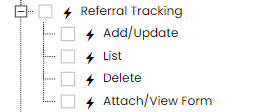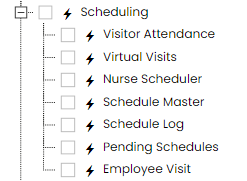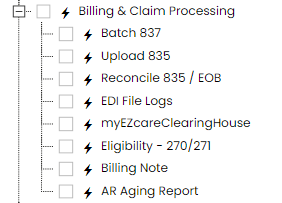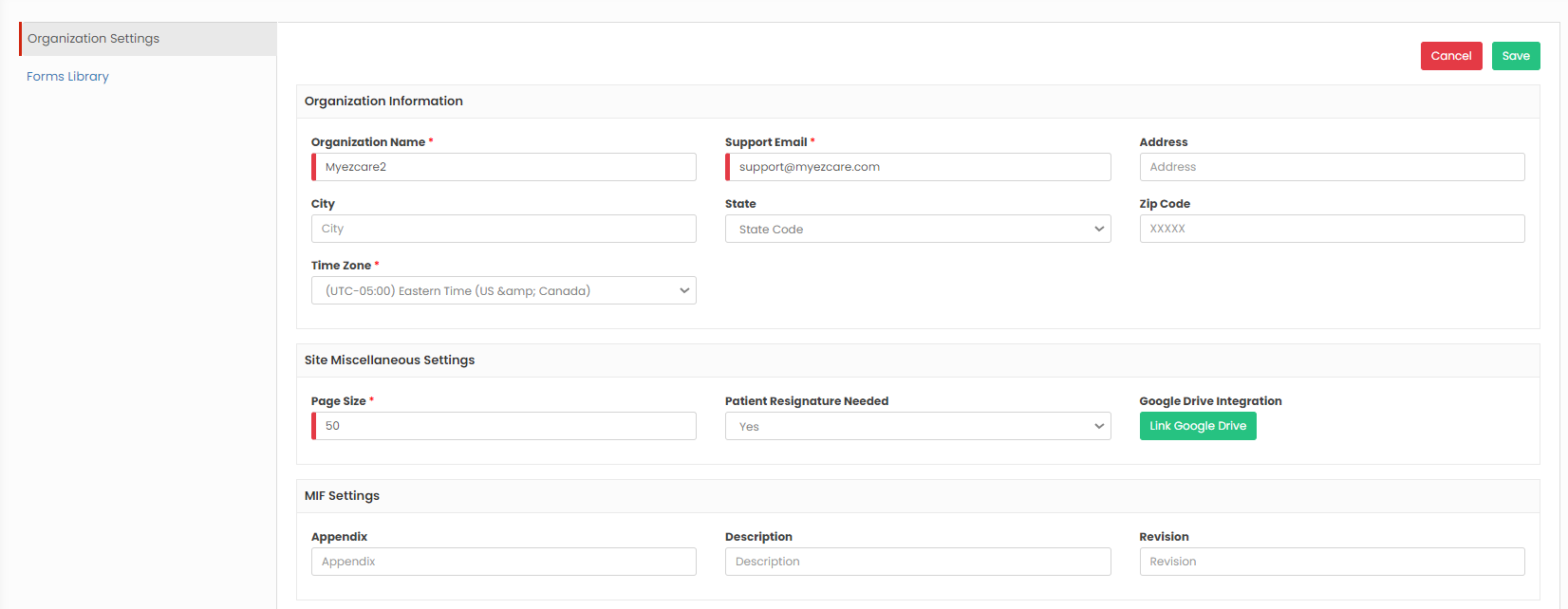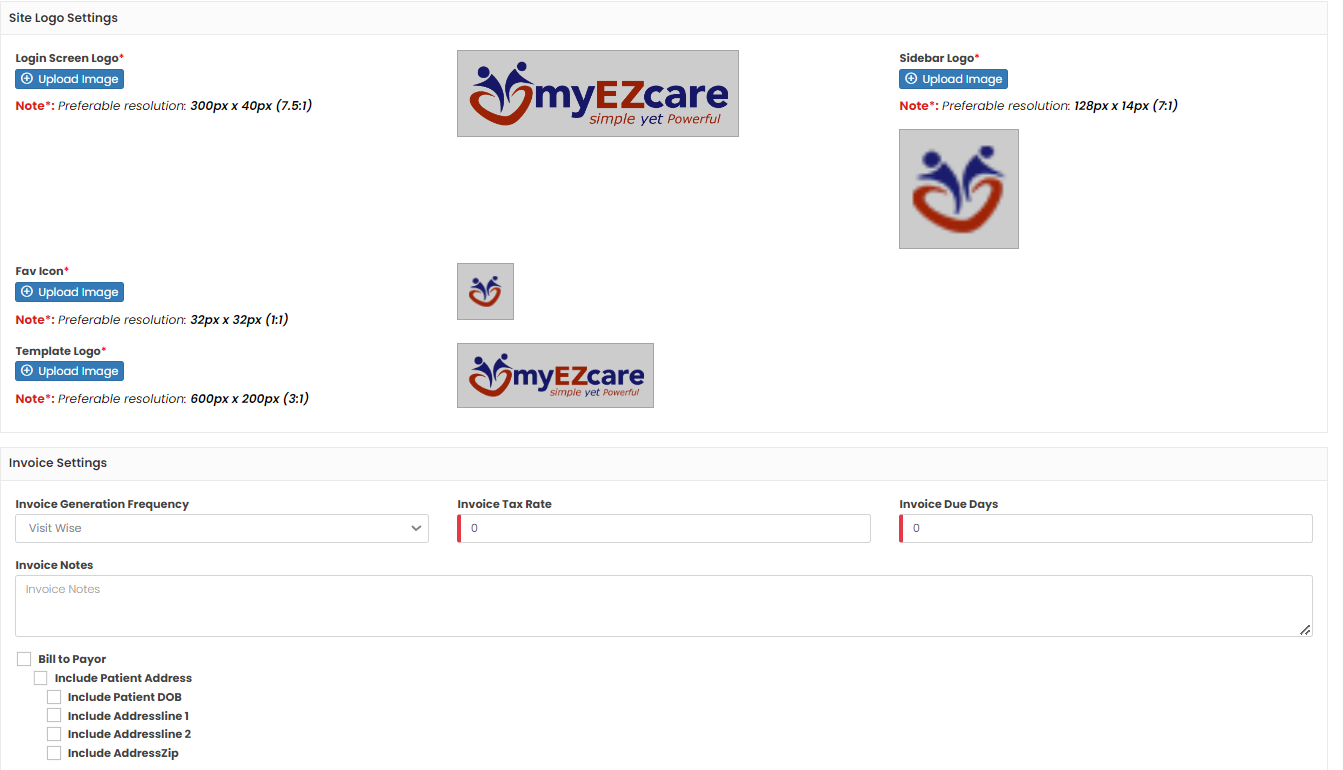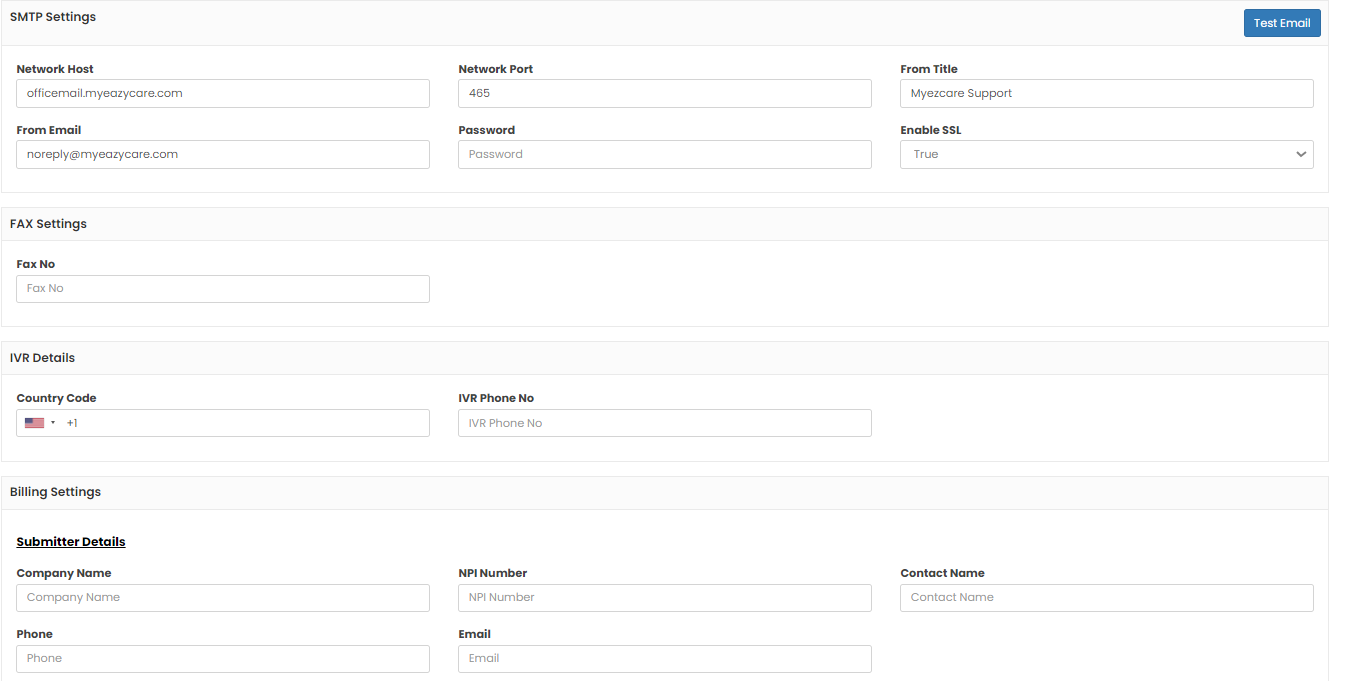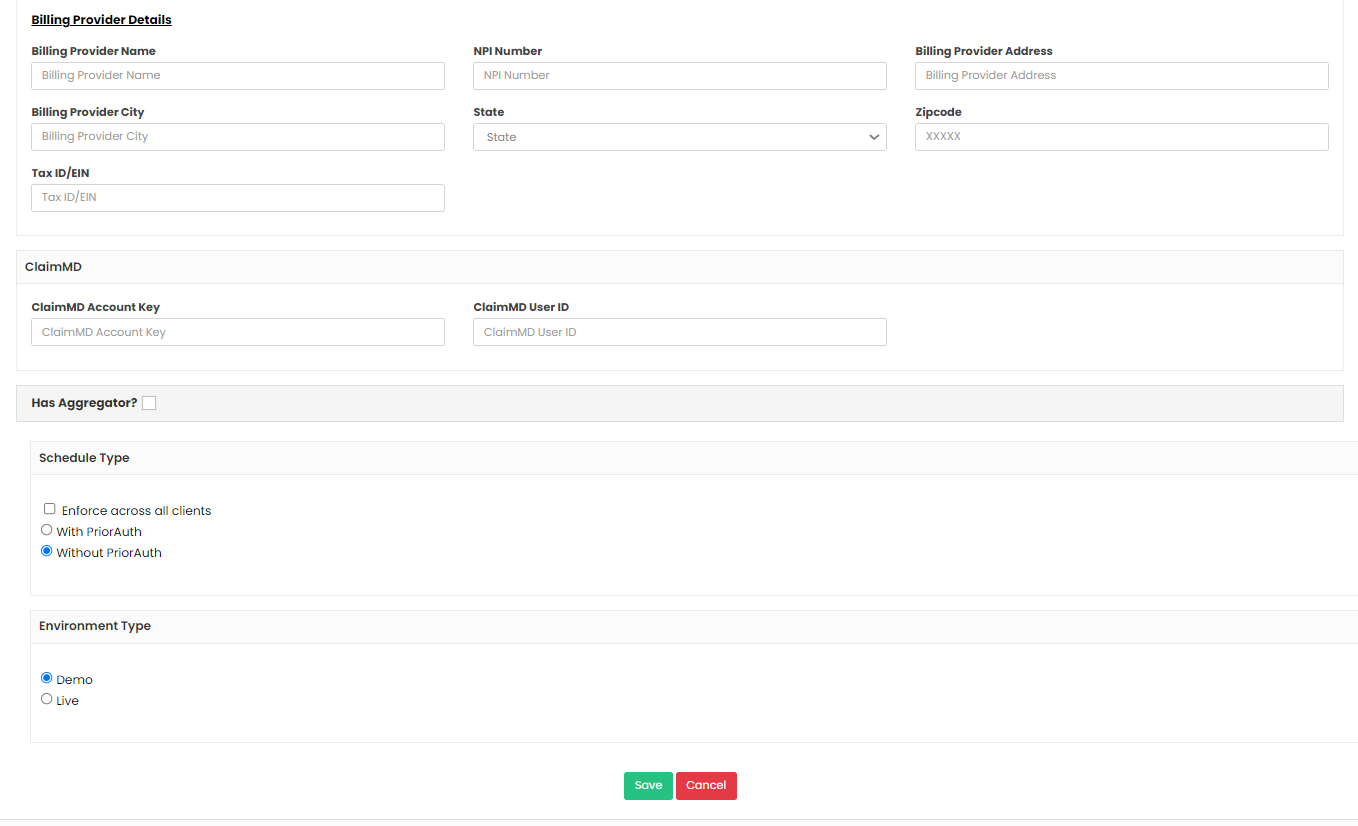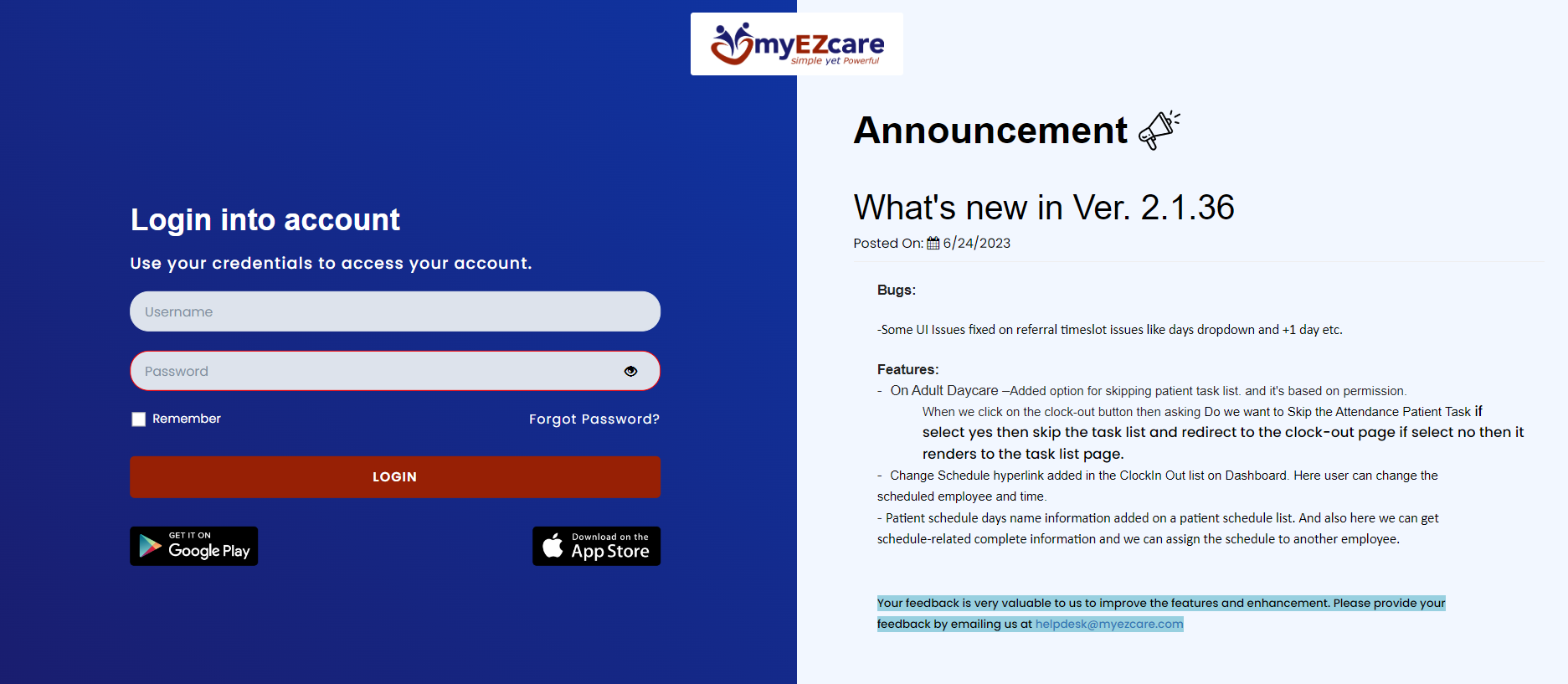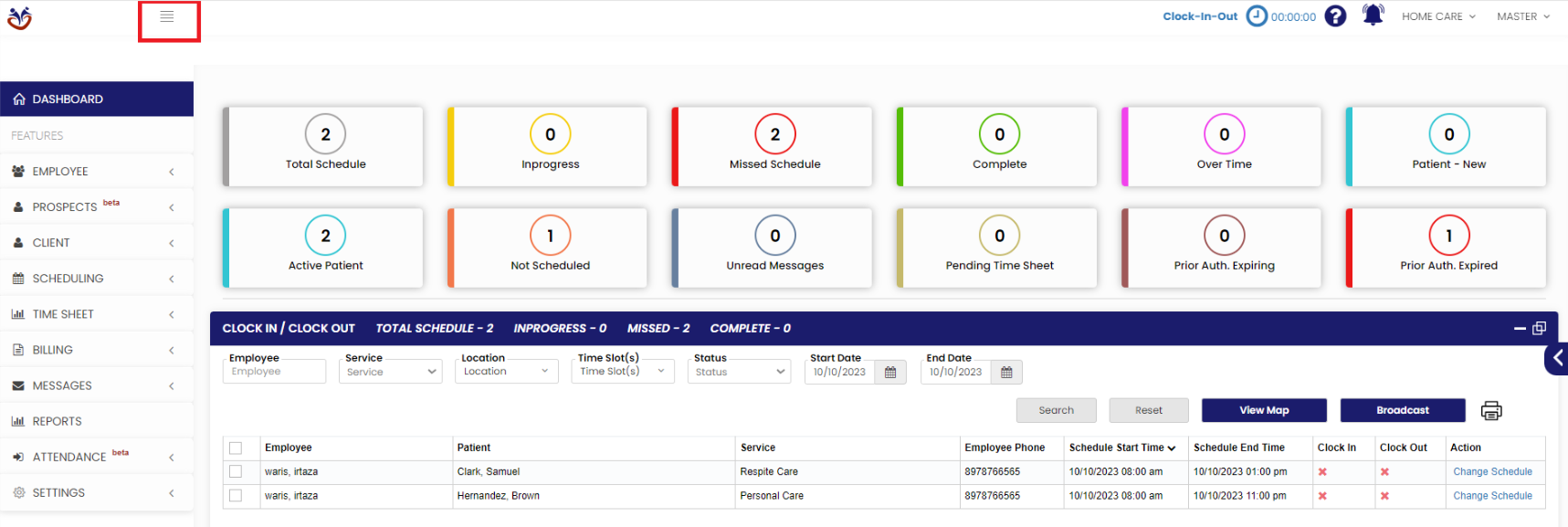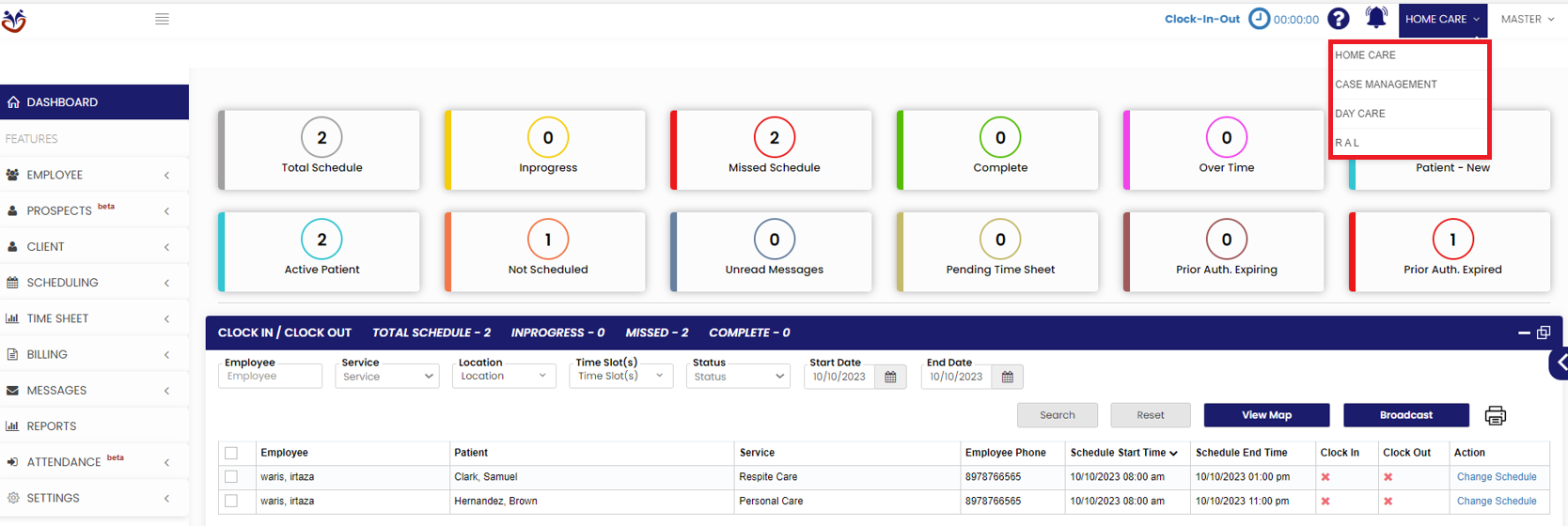Set up
Setting up an application is the process of installing, configuring, and customizing software or systems to ensure they work as intended. It involves tailoring the application to specific needs, setting user permissions, and preparing it for use, ensuring a smooth and effective operation.
Note: All Fields marked with * are mandatory and must be filled out, otherwise the system will generate an error indicating that the required information is missing.
User Login
The User Login on the top right corner of the software contains the following features:
- My Profiles
- Roles and Permissions
- Organization Settings
- Billing
- Log Out
My Profiles
The user can update the Profile information under My Profiles option. Update the required fields, upload the Profile image and click Save option.
Roles & Permissions
The user can give permissions to the respective Role of the Employee. Select and Role and choose the permission to be given for the Role.
- Mobile App Permissions
- Web Permissions
- Report Permissions
Please find the list of permissions for all the features in the application. Click on the + button to view all the permission for each Tab.
Dashboard
The Dashboard Permissions can be given to the employee by using the option Dashboard under Roles and Permissions. Mark the Permissions to be given to the employee and Click Save option.
Employee
The Permissions for the Employee to access the application can be given under the Employee option in Roles and Permissions. The user can select the checkbox to give access to only view, Add/Update the information in the application and also to Delete the records for the Employees.
Patient
The Permissions for the Employee to access the Patient details can be given under the Patient option in Roles and Permissions. The user can select the checkbox to give access to only view, Add/Update the information in the application and also to Delete the records for the patient.
Masters - Settings
The Permissions for the Employee to access the Settings can be given under the Masters option in Roles and Permissions. The user can select the checkbox to give access to only view, Add/Update the information in the application and also to Delete the records in the application.
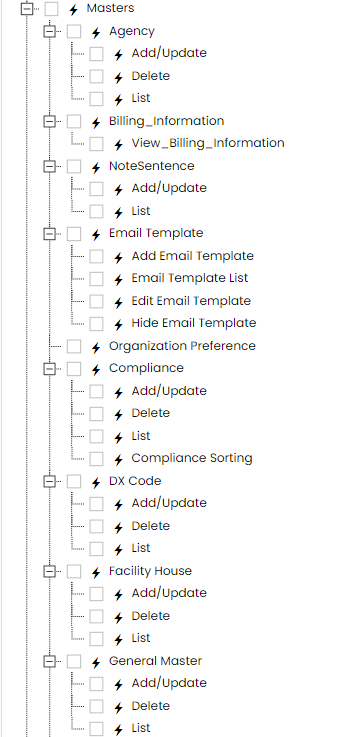 |
Referral Tracking - Prospects
The Permissions for the Employee to access the Prospects can be given under the option Referral Tracking in Roles and Permissions. The user can select the checkbox to give access to only view, Add/Update the information in the application and also to Delete the records in the application.
Scheduling
The Permissions for the Employee to access the Scheduling can be given under the option Scheduling in Roles and Permissions.
Billing & Claim Processing
The Permissions for the Employee to access the Billing & Claim Processing can be given under the option Billing & Claim Processing in Roles and Permissions.
Role - Super Admin
The Super Admin plays a pivotal role in overseeing and managing the administrative aspects of the software platform. This role encompasses a wide range of responsibilities including system configuration, user management, and ensuring the overall security and integrity of the platform.
User Management
- Create, modify, and deactivate user accounts as needed.
- Assign roles and permissions to users based on their responsibilities and access requirements.
- Configure and customize system settings based on organizational requirements.
- Manage and maintain system parameters such as access controls, data retention policies, and system integrations.
- Monitor data integrity and implement measures to maintain data quality and consistency.
- Implement and enforce security protocols to safeguard sensitive data and protect against unauthorized access.
Registered Nurse (RN)
The Registered Nurse (RN) plays a pivotal role in delivering comprehensive and compassionate healthcare services to patients in their homes. This position involves providing skilled nursing care, coordinating interdisciplinary care teams, and promoting patient education and self-management.
- Provide skilled nursing interventions such as wound care, medication management, intravenous therapy, and disease management in accordance with physician orders and nursing protocols.
- Perform clinical procedures safely and competently, ensuring adherence to infection control practices and patient safety standards.
- Assess patients' response to treatment, monitor for changes in health status, and modify care plans as necessary.
- Collaborate with physicians, therapists, social workers, and other healthcare professionals to ensure continuity of care and effective care transitions.
- Empower patients to actively participate in their care and make informed decisions about their health.
PCA / CNA - Personal Care Aide (PCA) / Certified Nursing Assistant (CNA)
The Personal Care Aide (PCA) or Certified Nursing Assistant (CNA) plays a vital role in supporting patients with activities of daily living (ADLs), providing personal care, and assisting with basic medical tasks under the supervision of a registered nurse or other healthcare professional. This position is critical in ensuring the comfort, safety, and well-being of patients receiving care in their homes.
- Help patients with personal hygiene tasks such as bathing, grooming, oral care, and toileting.
- Provide assistance with mobility, including transferring, positioning, and ambulation as needed.
- Provide feeding assistance to patients who require help with eating or drinking, ensuring proper nutrition and hydration.
- Assist patients with medication administration, including opening medication containers, handing pills, and providing water as needed.
- Measure and record vital signs such as temperature, pulse, respiration rate, and blood pressure under the direction of a registered nurse or healthcare professional.
- Provide companionship and emotional support to patients, engaging in conversation, activities, and social interaction to promote mental and emotional well-being.
HHA - Home Health Aide
The Home Health Aide (HHA) plays a fundamental role in providing essential personal care and support to patients who require assistance with activities of daily living (ADLs) and instrumental activities of daily living (IADLs) in the comfort of their own homes. Working under the supervision of a registered nurse or other healthcare professional, the HHA helps to promote the independence, safety, and well-being of patients receiving home health care services.
- Assist patients with personal hygiene tasks such as bathing, showering, grooming, oral care, and toileting.
- Encourage and support patients in performing range of motion exercises and other prescribed mobility exercises.
- Assist patients with meal preparation, including planning, cooking, and serving nutritious meals based on their dietary preferences and restrictions.
- Remind patients to take prescribed medications according to their medication schedules.
- Assist with laundry, including washing, drying, folding, and putting away clothes and linens.
- Monitor and record patients' food and fluid intake, as well as any dietary changes or concerns.
Clinical Team
The Clinical Team consists of healthcare professionals who collaborate to provide comprehensive and coordinated care to patients in their homes. This interdisciplinary team plays a critical role in assessing patients' needs, developing individualized care plans, and delivering skilled medical services to promote optimal health outcomes and quality of life.
- Conduct comprehensive assessments of patients' medical, functional, and psychosocial needs in the home environment.
- Assess patients' psychosocial needs, social support systems, and environmental factors that may impact their health and well-being.
- Facilitate communication and collaboration among members of the clinical team, including nurses, therapists, social workers, and other healthcare professionals.
- Communicate regularly with patients, families, and caregivers to provide updates on the patient's progress, address concerns, and promote adherence to the care plan.
- Coordinate care transitions, discharge planning, and long-term care arrangements in collaboration with patients, caregivers, and other healthcare providers.
- Coordinate physical therapy, occupational therapy, speech therapy, and other rehabilitative services as needed to help patients regain or maintain functional independence.
Organization Settings
The user can update the Organization information under Organization Settings. It has features like Logo Settings, Invoice Settings, Billing Settings etc.
Billing
The Billing option gives us information about the list of Invoices generated in the software.
Log Out
By clicking the "Log Out " button, the user can prevent unauthorized access to the account, reducing the data breeches and maintaining online privacy.
Hide Features
The four line in the Dashboard is used to hide the Feature names in the Dashboard screen.
Now, the Features name is not visible in the Dashboard screen and we can work in the large screen.
Notification
The Notification Bell option represents to Notify messages in the system.
Care Type
The user can choose the type of care by using the dropdown option on the top right corner in the software.

